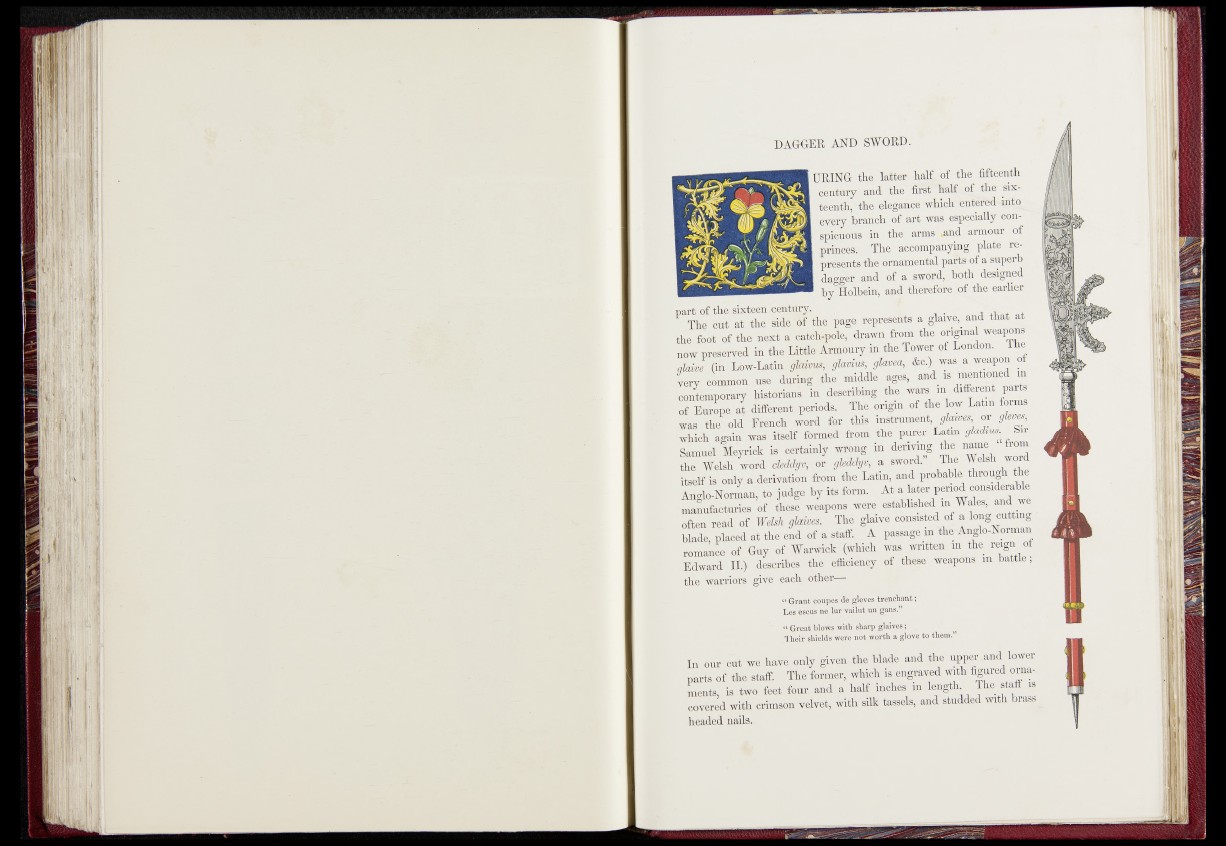
Lb RiLN( dL o fgQ «fifteenth,
Kw£mrv Tft^q&tjig *LX'
princes. T h e accompanying plate re presents
th e ornamental p a n s ot a supe^bH
Ldagg(''BA?i^^^a "word, footh 1 d( M£r\ Lf| d
^ifn^fot’ the ^ t^ n - c c ^ f c 'j ■ ■ I |^flHHBHIHIl » t i e " tli.' & d& il? ^ ^
M W W w » ^ t . . h i i > w W a t M M B M B f c ^ l
fflo* preserved in the L y ■Bj|BB g ^Hp ’uHrv.inW MH H ij d u ii^W ^ n id d lc
illE urope sit (MtTer.enVperu)(h. The origin of the, 111 / !nUrVd
was M M Freud l word for this I f l l U B
»'which "again was itself Q 9 from the purer Latin ^ ^ . ^ 1 —HHH HBBHM HWH BESnI ma B^l^mf^bfbeuwih Hn B■MBBB IB v S fo™- li™iMMiiMl of these weapons wore HHHKHHiM lifelfi read H Welsh glaives. The H H I I B B f l
blade, placed at the end of a staff. A passage in B B | H
romance 'of Guy of Warwick (which was
-Edward IL) d ^ o rif^ ''th e efficiency | D | | e weapons, in battle;
the warriors give each other—
“ Grant coupes de gleves trenchant;
Les es«fUB,-ne lur vailut un^gahs.”
‘ '1 Great blows with4)SWp<£laives; ,
Their shields w erep|||wqrth H a gln\t, to H them
BBBBB I„ our cut we have only given the and parts of the staff. The former, which rffngrhynd vvthIwured ornaments,
N two feet four and a half ihohes in l^ g th The staff m
. ■ covered With crimson velvet, with silk e s s e ls ^ d studdedwith- bras
headed nails.